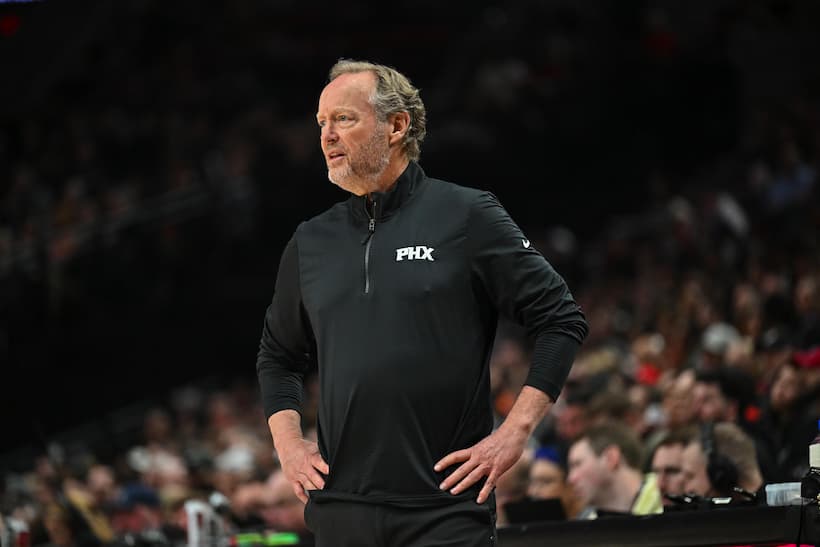New season, new head coach, and apparently, a new mindset for Jayson Tatum. After a summer of discussions surrounding Tatum’s playmaking abilities and a potential jump in that regard, it was his work on the low block that stood out in the Boston Celtics‘ first preseason game against the Orlando Magic.
Tatum struggled from three, hitting only one of his four attempts from long range, yet his work around the rim was a refreshingly encouraging sight. More importantly, how the team worked as a unit to create those rim-pressuring possessions gives us a glimpse of Ime Udoka’s vision for his franchise player this season.
“We like him (Tatum) in a lot of spots. We worked on a few things, and we’re starting to implement more sets to get him into those spots. They were crowding him on the perimeter, trying to take him off his spots, so we got him some easy looks out of timeouts,” Udoka said after the game.
It’s not an ATO, but you can clearly see the desired outcome was to get Tatum an easy opportunity around the rim. The play starts with Robert Williams setting an off-ball screen for Jaylen Brown. Tatum passes the ball to Williams, who is a capable passer above the break in what’s known as the “delay.” Brown then sets a back screen for Tatum, which unleashes him towards the rim thanks to the miscommunication on the defensive switch. Unfortunately, Williams pass had a little too much sauce on it.
Thankfully, Tatum manages to keep the play alive and redirects the ball to Juancho Hernangomez before getting himself back into the play. What followed next is what Ime Udoka coined “big boy ball,” with Tatum backing his man down before absorbing contact to finish at the rim.
Tatum’s finishing at the rim wasn’t only courtesy of his back-to-basket play; he also displayed a face-up game and flexed his improved strength when going strong to the hoop. Early in the second quarter, he received an inbounds pass from Aaron Nesmith, faced up, and took it to the rack for an easy dunk.
A key aspect to note here is Tatum’s screen for Al Horford before the inbounds. As Horford executes a “zipper cut” (a straight line, vertical cut from low block to the perimeter, courtesy of a screen), his defender is dragged with him, giving Tatum the required space to get his drive off without meeting an opposing big at the rim. In fairness, the weakside big should have rotated over, but that’s for the Orlando Magic to cover.
Taking a look at Tatum’s heat map, you can see a diversified offensive approach, rather than settling for perimeter jumpers or long mid-range attempts when attacking closeouts.
“We talked about playing big boy ball down there, and he got to the basket quite a few times, nice dunks and things of that nature. But we want him to be able to score from everywhere,” Udoka said of Tatum’s aggressive play.
Well, with dunks like the one below against an opposing center, we can feel pretty good about Tatum’s potential when driving the lane.
In his recent piece for CelticsBlog, Adam Spinella dissected Tatum’s Media Day comments and explored how Tatum getting to the rim and the free-throw line are both realistic goals for the All-Star. Finishing through contact and drawing more opportunities at the charity stripe is arguably what takes Tatum to the next level as a scorer, so seeing him put that into practice against the Magic is a great first step.
“He’s (Tatum) so much better at the rim than in that extended range. Inside of 3 feet, Tatum shot 73.5%. Outside that area, he converted on only 41.7% of his attempts. He’s almost twice as likely to score if he gets a few feet closer to the rim,” Spinella wrote.
Of course, this is only preseaso, and sterner tests will await, but there’s something to be said for how the team worked as a unit in creating easy scoring opportunities across the board. Tatum found himself operating on a steady diet of post-entry passes and screens that promised to provide room in the mid-range. Tatum looked comfortable in hunting down post possessions and attacking those post plays in a multitude of ways.
Ime Udoka mentioned how allowing the Celtics to shoot threes while still prioritizing getting downhill is going to be a balancing act. With shooters such as Tatum, Brown, and Nesmith on the roster, there’s every reason for the Celtics to find confidence in their perimeter play and the potential for growth there.
However, if Tatum can become a bigger rim threat and improve on his foul drawing, he may find that teams struggle to predict his next move, which should open up the floor for him even more. And once the floor opens up, as teams anticipate the drive or close out to kill a three, we will see his playmaking and rim finishing begin to flourish.





